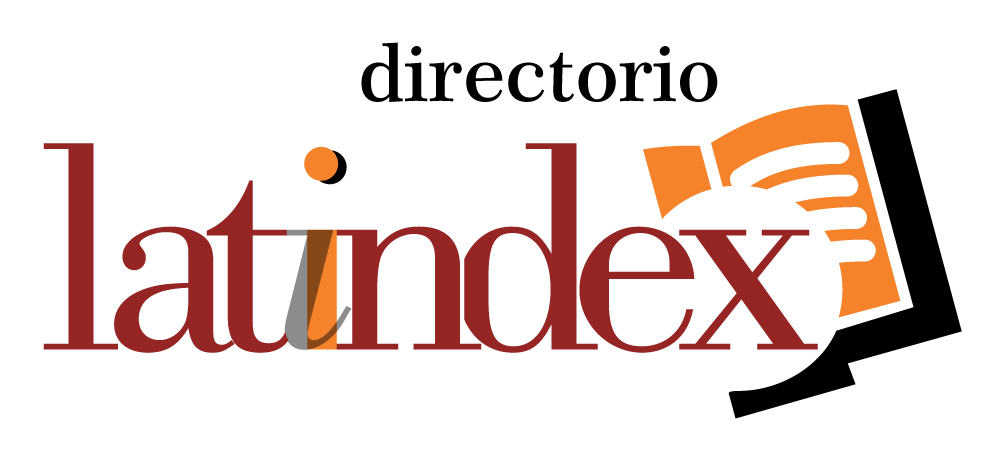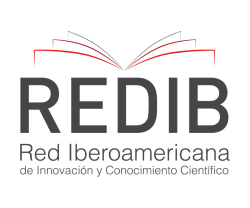Exploring the Musicality of Adult Non-Musicians
Resumen
While the development of musicality, how one interacts with their socio-acoustic environment, is well-documented in musicians, its progression in adult non-musicians remains less explored. This study aims to understand how musicality develops and is expressed in adult non-musicians by employing a mixed-methods, multiple case study approach with five adult non-musicians. The main research question was ‘what musical socio-cultural experiences are discernible in adult non-musicians and how could these experiences have affected participants’ musicality levels? Musical aural skills were assessed using the mini-PROMS musicality test (Zentner & Strauss, 2017) and semi-structured interviews were conducted to uncover contributing socio-cultural experiences. All participants displayed at least a basic level of musical proficiency, with content analysis of the interviews revealing five overarching themes: the role of music in daily life; pivotal musical experiences; cognitive processes; key external influences; and acquired skills. These findings shed light on the significance of music in the lives of all adults and how musical abilities can still develop in non-formal educational environments. Future studies should compare the themes discovered in this study to elucidate their interrelationships in the development of musicality during the entire human lifespan, from childhood to old age.
Descargas
Citas
Baxter-Moore, N., & Kitts, T. M. (2016). The Live Concert Experience: An Introduction. Rock Music Studies, 3(1), 1–4. https://doi.org/10.1080/19401159.2015.1131923
Beck, R., J., Gottfried, T., L., Hall, D., J., Cisler, C., A., & Bozeman, K., W. (2006). Supporting the Health of College Solo Singers: The Relationship of Positive Emotions and Stress to Changes in Salivary IgA and Cortisol during Singing. Journal for Learning through the Arts, 2(1). https://doi.org/10.21977/D92110079
Bonneville-Roussy, A., & Eerola, T. (2018). Age trends in musical preferences in adulthood: 3. Perceived musical attributes as intrinsic determinants of preferences. Musicae Scientiae, 22(3), 394-414.
Burland, K., & Pitts, S. (Eds.). (2016). Coughing and Clapping: Investigating Audience Experience. Routledge. https://doi.org/10.4324/9781315574455
Carlow, R. (2015). Book Review: Edgard, Willems. Psychological Foundations of Music Education. Journal of Historical Research in Music Education, 37(1), 94–99. https://doi.org/10.1177/1536600615608470
Calvert, D. (2020). Liturgical Speech Acts in Congregational Singing. The Hymn, 71(2), 41–47.
Clarke, V., & Braun, V. (2017). Thematic analysis. The Journal of Positive Psychology, 12(3), 297–298. https://doi.org/10.1080/17439760.2016.1262613
Cate, C., & Spierings, M. (2019). Rules, rhythm and grouping: auditory pattern perception by birds. Animal Behaviour, 151, 249-257.
Cohen, S. (1990). The Hidden Musicians: Music-Making in an English Town. By Ruth Finnegan. Cambridge: Cambridge University Press, 1989. 378 pp. Popular Music, 9(3), 384–385. https://doi.org/10.1017/S0261143000004207
Colwell, R., & Davidson, L. (1996). Musical Intelligence and the Benefits of Music Education. NASSP Bulletin, 80(583), 55–64. https://doi.org/10.1177/019263659608058310
Connelly, Lynne M., and Jill N. Peltzer. "Underdeveloped themes in qualitative research: Relationship with interviews and analysis." Clinical nurse specialist 30.1 (2016): 52-57.
Cheah, Y., Wong, H. K., Spitzer, M., & Coutinho, E. (2022). Background Music and Cognitive Task Performance: A Systematic Review of Task, Music, and Population Impact. Music & Science, 5. https://doi.org/10.1177/20592043221134392
Corrigall, K. A., & Schellenberg, E. G. (2015). Music cognition in childhood. In G. E. McPherson (Ed.), The Child as Musician (pp. 81–101). Oxford University Press. https://doi.org/10.1093/acprof:oso/9780198744443.003.0005
Creswell, J. W. (2014). Research Design: Qualitative, Quantitative, and Mixed Methods Approaches. India: SAGE Publications.
Cross, I., & Morley, I. (2010). The evolution of music: Theories, definitions and the nature of the evidence. In Communicative Musicality (pp. 61–82).
Diamond, A. (2013). Executive Functions. Annual Review of Psychology, 64, 135–168.
Etikan, I., Musa, S. A., & Alkassim, R. S. (2016). Comparison of convenience sampling and purposive sampling. American journal of theoretical and applied statistics, 5(1), 1-4.
Fitch, W. T. (2015). Four principles of bio-musicology. Philosophical Transactions. Biological Sciences, 370(1664), 20140091–24. https://doi.org/10.1098/rstb.2014.0091
Forrester, M. A., & Borthwick-Hunter, E. (2015). Understanding the Development of Musicality: Contributions From Longitudinal Studies. Psychomusicology, 25(2), 93–102. https://doi.org/10.1037/pmu0000086
Gaser, C., & Schlaug, G. (2003). Brain Structures Differ between Musicians and Non-Musicians. The Journal of Neuroscience, 23(27), 9240–9245.
Gaston, E. T. (1944). A Test of Musicality: Manual of Directions. Streep Music Company.
Gibbons, A. C. (1977). Popular music preferences of elderly people. Journal of music therapy, 14(4), 180-189.
Green, L. (2017). Music, informal learning and the school: A new classroom pedagogy. Routledge.
Gordon, E. (1970). First-Year Results of a Five-Year Longitudinal Study of the Musical Achievement of Culturally Disadvantaged Students. Journal of Research in Music Education, 18(3), 195–213. https://doi.org/10.2307/3344459
Hallam, S. (2015). The power of music. International Music Education Research Centre (iMERC) Press.
Hallam, S. (2017). Musical Identity, Learning, and Teaching. In Handbook of Musical Identities (Vol. 1–Book, Section). Oxford University Press.
Hansen, D., & Milligan, S. A. (2012). Aural skills: At the juncture of research in early reading and music literacy. Music Educators Journal, 99(2), 75-80.
Henson, R. A., & Wyke, M. A. (1982). The Performance of Professional Musicians on the Seashore Measures of Musical Talent: An Unexpected Finding. Cortex, 18(1), 153–157. https://doi.org/10.1016/S0010-9452(82)80026-9
Hashimov, E. (2015). Qualitative Data Analysis: A Methods Sourcebook and The Coding Manual for Qualitative Researchers: Matthew B. Miles, A. Michael Huberman, and Johnny Saldaña. Thousand Oaks, CA: SAGE, 2014. 381 pp. Johnny Saldaña. Thousand Oaks, CA: SAGE, 2013. 303 pp.
Hoshino, E. (2017). Hallam, Susan, Ian Cross, and Michael Thaut, eds. 2009. The Oxford Handbook of Music Psychology. Evolutionary Studies in Imaginative Culture, 1(1), 233–233. https://doi.org/10.26613/esic.1.1.33
Istvandity L. (2019) The lifetime soundtrack: Music and autobiographical memory. Equinox Publishing Ltd.
Jaffurs, S. (2004). Developing musicality.
Jensenius, A., Wanderley, M., Godøy, R., & Leman, M. (2009). Musical Gestures:
Concepts and methods in research. Musical Gestures: Sound, Movement, and Meaning. https://doi.org/10.4324/9780203863411
Jones, J. D. (2018). Scaffolding the Dalcroze Approach. General Music Today, 32(1), 5–12. https://doi.org/10.1177/1048371318770821
Khalass, N., Zarnomitrou, G., Haque, K. I., Salmi, S., Maulini, S., Linkermann, T., Ziliotto Salamon, N., Balint, J. T., Bidarra, R., Gentile, M., Allegra, M., & Söbke, H. (2019). Musicality: A Game to Improve Musical Perception. Lecture Notes in Computer Science, Journal Article.
Kahn, J. H., Ladd, K., Feltner-Williams, D. A., Martin, A. M., & White, B. L. (2021). Regulating sadness: Response-independent and response-dependent benefits of listening to music. Psychology of Music, 03057356211048545.
Krishna, R., Maithreyi, R., & Surapaneni, K. M. (2010). Research bias: a review for medical students. J Clin Diagn Res, 4(2), 2320-2324.
Karma, K. & Helsinki Univ. (Finland). Inst. of Education. (1976). The Ability to Structure Acoustic Material as a Measure of Musical Aptitude: 3, Theoretical Refinements. Research Bulletin.
Law, L. N. C., & Zentner, M. (2012). Assessing Musical Abilities Objectively: DRAFT
Construction and Validation of the Profile of Music Perception Skills. PLoS ONE, 7(12), e52508. https://doi.org/10.1371/journal.pone.0052508
Maury, S., & Rickard, N. (2016). Wellbeing in the Classroom: How an Evolutionary Perspective on Human Musicality Can Inform Music Education. Australian Journal of Music Education, 50(1), 3–15.
Mahn, H. (1999). Vygotsky's methodological contribution to sociocultural theory. Remedial and Special education, 20(6), 341-350.
Merriam, S. B. (2009). Qualitative research: A guide to design and implementation (4th ed.). Jossey-Bass.
Müllensiefen, D., Gingras, B., Musil, J., & Stewart, L. (2014). The musicality of non-musicians: An index for assessing musical sophistication in the general population. PloS One, 9(2), e89642–e89642. https://doi.org/10.1371/journal.pone.0089642
Morse, J. M. (2015). Data were saturated... Qualitative health research, 25(5), 587-588.
Muntanyola-Saura, D. (2016). Musicality as Distributed Cognition in a Dance Studio. Methaodos : Revista de Ciencias Sociales, 4(1).
Nicolai, J., Gundacker, C., Teeselink, K., & Güttinger, H. R. (2013). Human melody singing by bullfinches (Pyrrhula pyrrula) gives hints about a cognitive note sequence processing. Animal Cognition, 17(1), 143–155.
Parameswaran, U. D., Ozawa-Kirk, J. L., & Latendresse, G. (2020). To live (code) or to not: A new method for coding in qualitative research. Qualitative social work, 19(4), 630-644.
Porflitt, F. I., & Rosas-Díaz, R. R. (2019). Behind the scene: Cognitive benefits of playing a musical instrument. Executive functions, processing speed, fluid intelligence and divided attention / Detrás de la escena: Beneficios cognitivos de tocar un instrumento musical.
Pramono, H., Gunadi, J. W., Adhika, O. A., Limyati, Y., Gisela, H., & Dewi, V. C. (2019). The effect of classical and jazz background-music on concentration and reading comprehension in young adult women. Journal of Medicine and Health, 2(4).
Schellenberg, E. G. (2011). Examining the association between music lessons and intelligence. The British Journal of Psychology, 102(3), 283–302. https://doi.org/10.1111/j.2044-8295.2010.02000.x
Seashore, C. E., Saetveit, J. G., & Lewis, D. (1960). The Seashore measures of musical talents. Psychological Corporation.
Small, C. (1998). Musicking: The meanings of performing and listening. Wesleyan.
Swanwick, K. (2016). A developing discourse in music education : the selected works of keith swanwick (Ser. World library of educationalists series). Routledge. Retrieved December 4, 2023,
Varvarigou, M., Creech, A., Hallam, S., & McQueen, H. (2011). Bringing different generations together in music-making: an intergenerational music project in east london. International Journal of Community Music, 4(3), 207–220.
Welch, G. F. (1998). Early Childhood Musical Development. Research Studies in Music Education, 11(1), 27–41. https://doi.org/10.1177/1321103X9801100104
Welch, G. Howard, D. M. 1956-(David M., Nix, J., & Oxford University Press. (2019). The Oxford handbook of singing (First;1;). Oxford University Press. DRAFT 139 https://doi.org/10.1093/oxfordhb/9780199660773.001.0001
Young, S., & Gillen, J. (2007). Toward a Revised Understanding of Young Children’s musical Activities: Reflections from the ‘Day in the Life’ Project. 84, 79–99. https://doi.org/10.7916/D81N7ZR0
Yin, R. K. (2018). Case study research and applications.
Tashakkori, A., & Creswell, J. W. (2007). The New Era of Mixed Methods. Journal of Mixed Methods Research, 1(1), 3–7. https://doi.org/10.1177/2345678906293042
Tafuri, J., Welch, G., & Hawkins, E. (2017). Infant musicality: New research for educators and parents. Routledge.
Trehub, S. E., Weiss, M. W., & Cirelli, L. K. (2019). Musicality across the lifespan. In Foundations in music psychology: Theory and research (pp. 265–303). The MIT Press.
Wagemaker, H., Open Access Publishing in European Networks, SpringerLink (Online service), & Springer Nature. (2020). Reliability and Validity of International Large-Scale Assessment: Understanding IEA’s Comparative Studies of Student
Zentner, M., & Strauss, H. (2017). Assessing musical ability quickly and objectively: development and validation of the Short‐PROMS and the Mini‐PROMS. Annals of the New York Academy of Sciences, 1400(1), 33-45.
Zdzinski, Stephen F., and Amy Jarman Horne. "Musical autobiographies of preservice music educators." Research Perspectives in Music Education 16.1 (2014): 32-43.
Derechos de autor 2025 Alejandro Ayos , Brittany McCormack, Harry Kanasa

Esta obra está bajo licencia internacional Creative Commons Reconocimiento 4.0.











.png)




















.png)
1.png)


